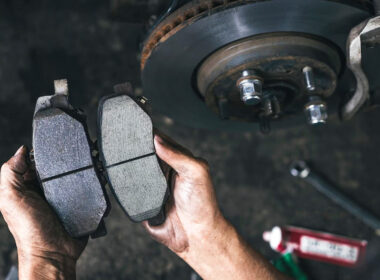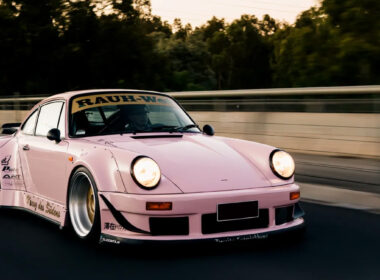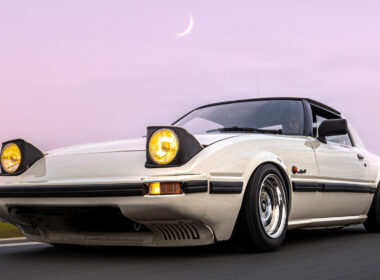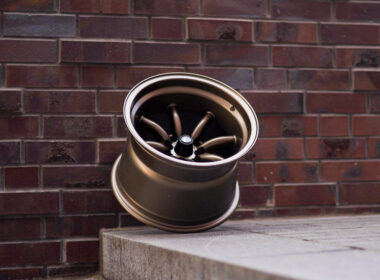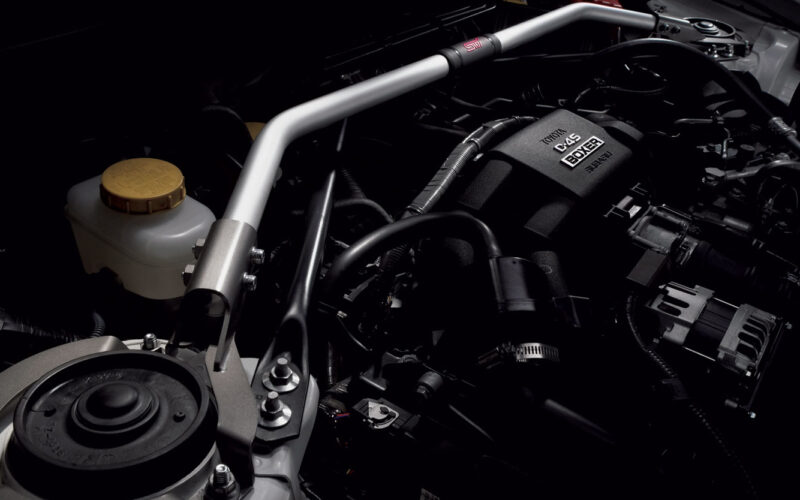Strut bars promise better chassis rigidity and predictable handing around hard corners. But whether or not they deliver on that promise depends on what car you drive and how you drive it.
For instance, if your car already has an adequately rigid chassis, you probably won’t notice any difference after installing a strut bar, unless you’re pushing it to the limit.
That said, not noticing a difference doesn’t necessarily mean the strut bar isn’t doing anything. Any amount of improvement in chassis rigidity, no matter how small, is always a good thing.
Continue reading to learn everything you need to know about strut bars before you buy one for your car.
Understanding Strut Bars

A strut bar, also called a strut brace, is a rigid metal link that bolts on to your left and right strut towers (front or rear) with the purpose of reinforcing the chassis and reducing flex by connecting the two stress points.
Flex typically occurs during hard cornering or when one of the two wheels (front or rear) goes over a bump. When that happens, the torisonal rigidity of the car’s body is compromised to some extent, owing to the pressure being exerted on the strut tops.
All that pressure combined with a loss in rigidity causes the steering linkages and other suspension components to move and cause temporary but unwanted changes in alignment and geometry.
Originally, strut bars were meant for cars with MacPherson strut suspension, which makes sense because MacPherson struts are load bearing on top, unlike double-wishbone or multi-link independent suspension setups.
With MacPherson struts, a lot of the lateral force generated while cornering gets absorbed by the strut towers, right at the point where they’re connected to the chassis.

On double wishbone suspension, however, all of the lateral and vertical forces are contained in and absorbed by the upper and lower control arms.
Despite this, many automakers offer strut bracing as standard equipment even on double-wishbone suspension-equipped cars. Which goes to show that any amount of additional rigidity is a welcome addition.
To summarize, strut bars help with the following attributes:
- They change where the lateral G forces are absorbed.
- Forces are evenly distributed on both the left and right strut tops.
- Torsional rigidity of the car sees some degree of improvement.
Do They Actually Work?
Strut bars are a controversial upgrade. Some enthusiasts swear by them, others believe they’re snake oil, and that’s because of the vastly different results people get from installing them.
Some amount of skepticism is warranted when it comes to the effectiveness of this upgrade. But one thing is for sure; no matter what car they’re installed on, they will add some amount of rigidity.

The main question is: how noticeable is the difference anyway? That depends on the following factors:
- How old the car is: Older cars are more prone to flexing owing to all the abuse they might’ve taken over the years.
- Suspension type: Strut bars play a much larger role in MacPherson struts in contrast to other suspension assembly types such as double wishbone and independent multi-link.
- OEM Chassis rigidity: Some car chassis are far more likely to flex because of the way they’re designed. It’s these cars that will benefit the most from strut bars. Cars like NA Miatas, BMW E30s, and Honda DelSols, to name a few.
- Driving style: A spirited drive through the backroads probably won’t reveal the limitations of your chassis, but a day at the track definitely will, especially with a skilled driver behind the wheel. That’s where you’re going to notice a difference.
- Other suspension mods: If you have coilovers with stiff springs, sway bars, sticky tires, and a roll cage already installed on your car before you install a strut brace, you probably won’t notice the strut bar at all. Unless you know exactly what to look for.
All the forces that affect the chassis come through the suspension and subframe. No matter what car you drive, if better handling is what you’re after, it makes sense to upgrade your wheels, tires, and suspension first, then look into improving structural rigidity.

The whole point of installing a strut bar is to maximize the effectiveness of your suspension components. If those aren’t in the best shape to begin with, you likely won’t see any improvement in handling, no matter how much you spend on a strut brace.
Remember, sway bars help to improve weight transfer characteristics and strut bars are meant for better structural rigidity, and for keeping the suspension aligned correctly.
To learn more about how strut bars work and what they do, you need to have a basic grasp of what torisonal rigidity is, why you need it, and why chassis flex is bad for you.
What Is Chassis Flex and Why It’s Bad
Torisonal rigidity is the main challenge for any automotive structure. It refers to the twisting force that the car is subjected to when it’s banking into corners or driving over bumps.
Chassis flex indicates a lack of rigidity in your car’s frame. Automakers strive to avoid this because higher levels of body flex are a sign of structural weakness.
Zero or close to zero flex is considered ideal, because if the chassis responds to vertical and lateral g-forces by flexing too much, it’s going to store energy like a spring.

This energy is released very unpredictably, which results in unwanted changes in suspension geometry and the positioning of some steering components.
As a result, it affects toe alignment settings and causes the steering to become unpredictable in moments of extreme force (where it really matters). In cars that have poor rigidity specs, most experienced drivers can tell when the chassis flexes.
Telltale signs include cracks and wrinkles on the firewall, broken welds on the framerail, splitting sheetmetal, and uneven gaps on top of the doorframe and car body, to name a few.
If you’ve ever driven an old convertible, you’ve probably experienced cowl shake, where the middle section of the chassis flexes, causing the bulkhead in front of the passenger compartment to move and vibrate.
The problem of chassis rigidity has gotten a lot better over the years, thanks to advancements in computer modeling, metallurgy, and frame design. We’ve gone from driving cars with rigidity specs of 5,000 nm/degree to those with 40,000 nm/degree.
Here’s a quick comparison of the torisonal rigidity of a few Honda cars for reference:
- 1st Gen S2000 AP1: 7100 nm/degree
- 6th Gen Civic EK Hatch: 10,700 nm/degree
- 10th Gen Accord Sedan: 37,700 nm/degree
Ridgid chassis provide a stable foundation for your suspension. Minimizing chassis flex helps the suspension to be more involved and do what it’s meant to do — maintain traction by getting the most out of your contact patch.
How Strut Bars Affect Handling

Strut tower braces and reduce flex on the tops of the front and/or rear strut towers. However, they don’t cure this issue entirely. They only marginally increase rigidity on whichever end of the car you’ve installed them on.
When your chassis is subjected to extreme cornering (lateral load), or if one of the two front or rear tires encounters an obstacle (vertical load), the top of the strut tower will deflect and move closer to and away from the opposite strut tower.
This effect, along with the chassis’ stored energy, is what causes the unwanted changes in steering and suspension angles as mentioned earlier.
Basic strut braces will help to minimize the deflection between the shock tower and the firewall, which translates to more predictable handling in extreme situations. They’re a practical, easily accessible solution.
Noticing these changes doesn’t come easily to most drivers. Ideally, to diagnose any deviation in chassis rigidity, you would have to get a computer analysis done by a structural engineer, which is not always feasible.
So if you want to experience the effect strut bars have on your handling, the only thing you can rely on is your experience at the track. If you know your machine well enough, you’ll see a difference. But remember, placebo is real.
Regular vs. Triangulated Strut Tower Braces

Strut bars aren’t limited to connecting strut towers. Some of them include anywhere between 2 and 4 points of contact with the chassis.
For example, some strut bars will not only tie the two strut towers together, but they’ll also triangulate the brace to the firewall. This greatly improves chassis rigidity, especially between the firewall and the shock tower.

If regular strut bars that aren’t triangulated to the back of the firewall improve rigidity by 1% to 5%, triangulated or trapezoidal strut braces will offer a 10% improvement.
Additionally, for more rigidity, you can look into lower tie bars to reinforce the subframe by connecting the pivot points of the lower control arms, aftermarket fender braces, chassis braces, and bolt-in roll bars.
Should You Install a Strut Tower Brace?
As long as you find a good quality strut bar that’s made specifically for your car, you’re good. Even better if it’s triangulated.
Any improvement in rigidity is absolutely a step in the right direction. Check out our range of strut bars today!
